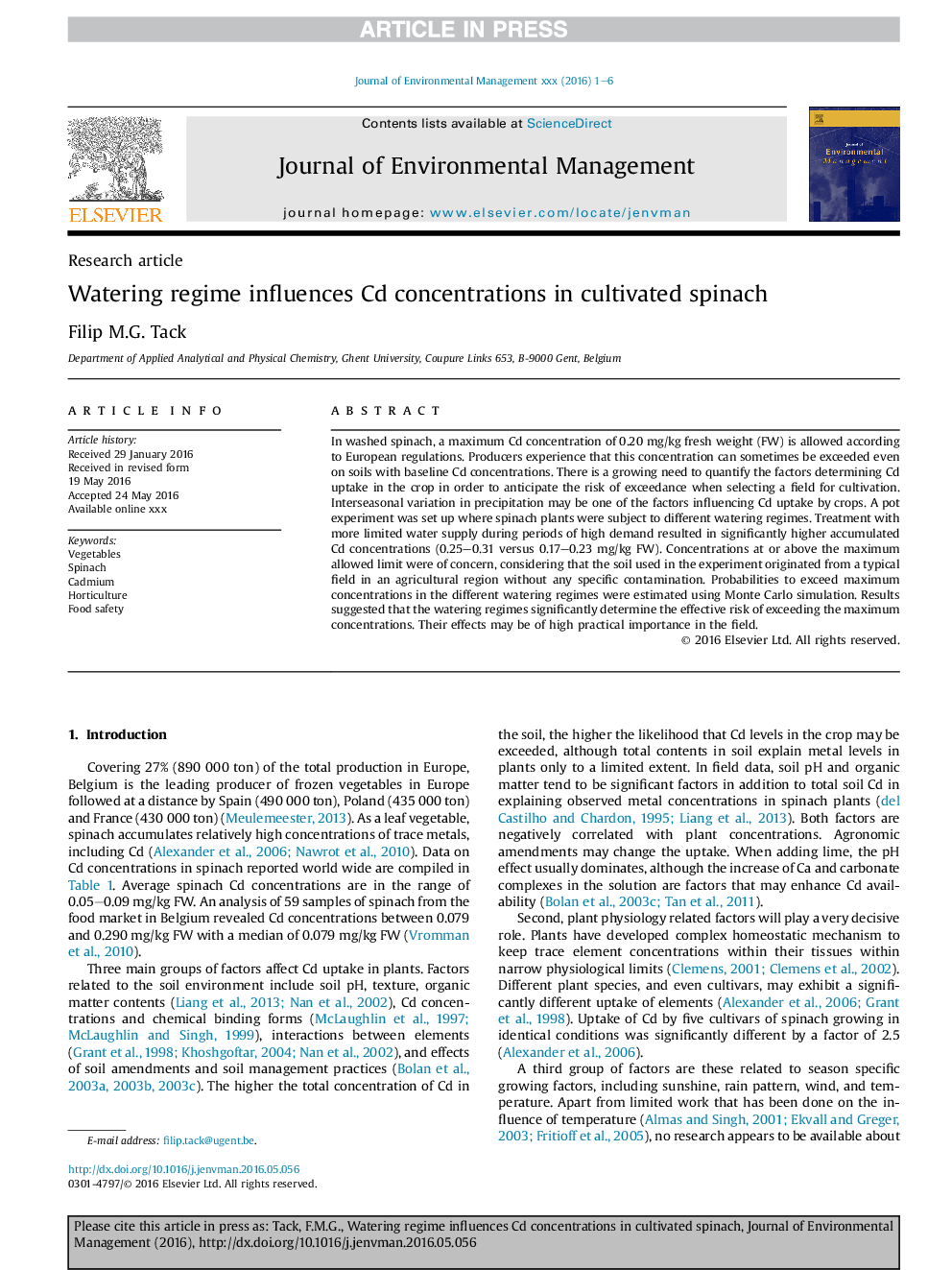| Article ID | Journal | Published Year | Pages | File Type |
|---|---|---|---|---|
| 5117419 | Journal of Environmental Management | 2017 | 6 Pages |
Abstract
In washed spinach, a maximum Cd concentration of 0.20Â mg/kg fresh weight (FW) is allowed according to European regulations. Producers experience that this concentration can sometimes be exceeded even on soils with baseline Cd concentrations. There is a growing need to quantify the factors determining Cd uptake in the crop in order to anticipate the risk of exceedance when selecting a field for cultivation. Interseasonal variation in precipitation may be one of the factors influencing Cd uptake by crops. A pot experiment was set up where spinach plants were subject to different watering regimes. Treatment with more limited water supply during periods of high demand resulted in significantly higher accumulated Cd concentrations (0.25-0.31 versus 0.17-0.23Â mg/kg FW). Concentrations at or above the maximum allowed limit were of concern, considering that the soil used in the experiment originated from a typical field in an agricultural region without any specific contamination. Probabilities to exceed maximum concentrations in the different watering regimes were estimated using Monte Carlo simulation. Results suggested that the watering regimes significantly determine the effective risk of exceeding the maximum concentrations. Their effects may be of high practical importance in the field.
Related Topics
Physical Sciences and Engineering
Energy
Renewable Energy, Sustainability and the Environment
Authors
Filip M.G. Tack,
